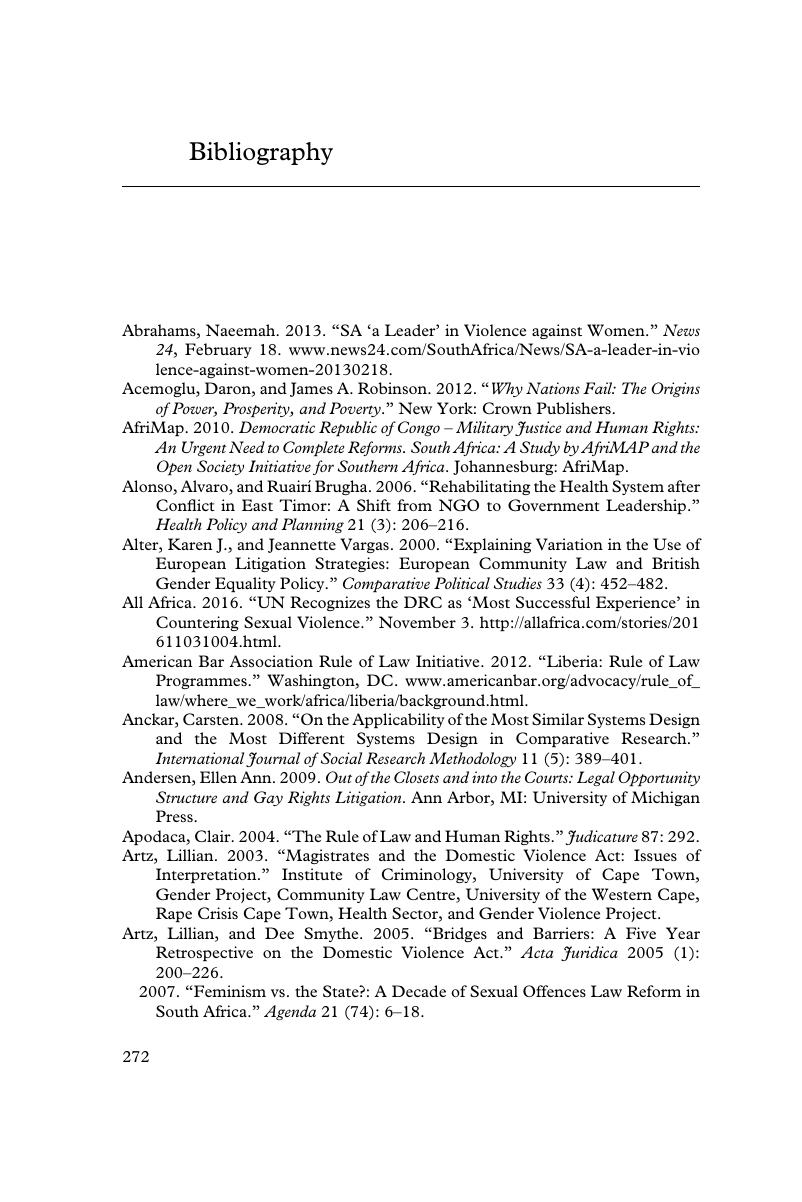 Strong NGOs and Weak States
Strong NGOs and Weak States Bibliography
Published online by Cambridge University Press: 04 May 2018
Summary

- Type
- Chapter
- Information
- Strong NGOs and Weak StatesPursuing Gender Justice in the Democratic Republic of Congo and South Africa, pp. 272 - 299Publisher: Cambridge University PressPrint publication year: 2018
